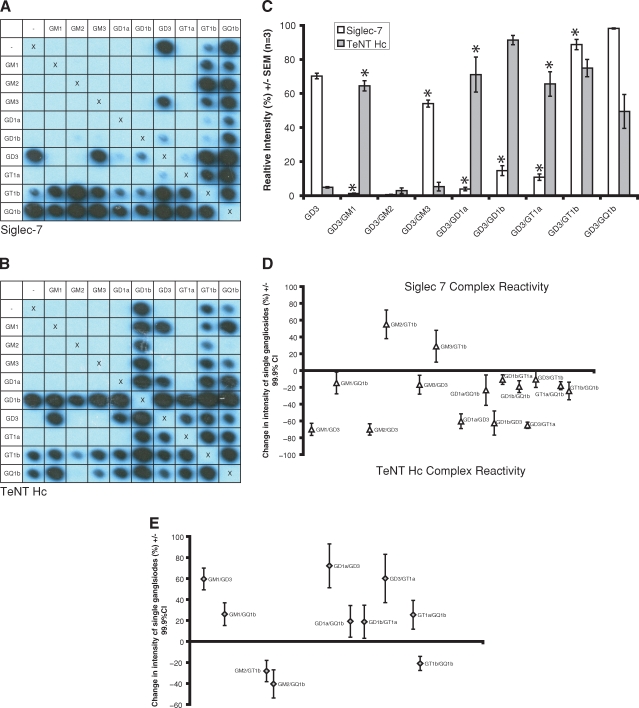Fig. 1.
Row and column headings reveal the complex at each location. ‘X's represent negative controls (methanol only) and act as a line of symmetry for duplicate spots within the same membrane. (A) Siglec-7-Fc reacts with GD3 in isolation, yet the signal intensity for most complexes of GD3 is either abolished or much reduced (“complex attenuated”). (B) TeNT HC does not bind to the single gangliosides GD3, GM1, GD1a or GT1a, yet reacts strongly with heterodimers of these gangliosides containing GD3 (“complex enhanced”). (C) Quantification of the modulatory effects of GD3 series complexes on siglec-7 and TeNT HC binding. Asterisks denote complexes displaying binding levels significantly different from the sum of the two individual components. Complex modulated binding was defined as the sum of intensity readings for the single gangliosides (to a maximum of 100%) subtracted from the signal generated by the complex being significantly different to zero, shown by the 99.9% confidence interval for this difference failing to cross zero. Complexes fitting this definition, along with the magnitude of the effect, are plotted for Siglec-7 (D) and TeNT HC (E). Ganglioside complexes where reactivity was not significantly different to that of the component glycolipids are not shown in these graphs.

